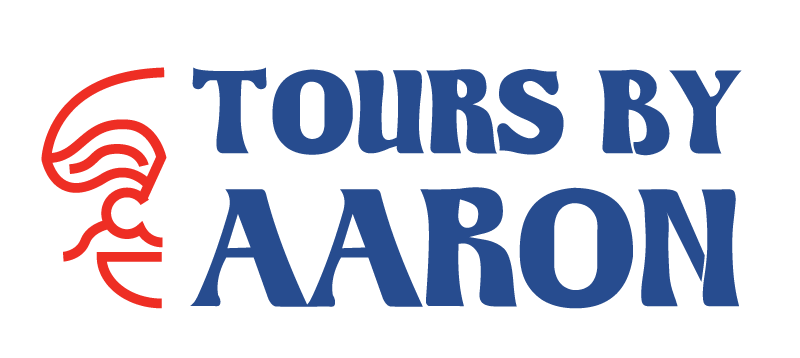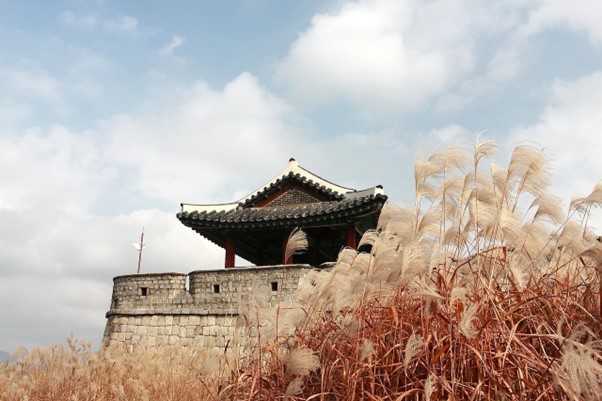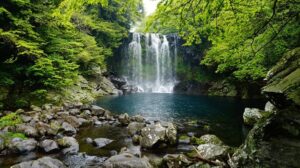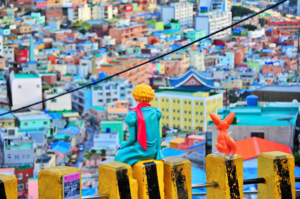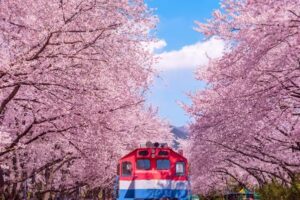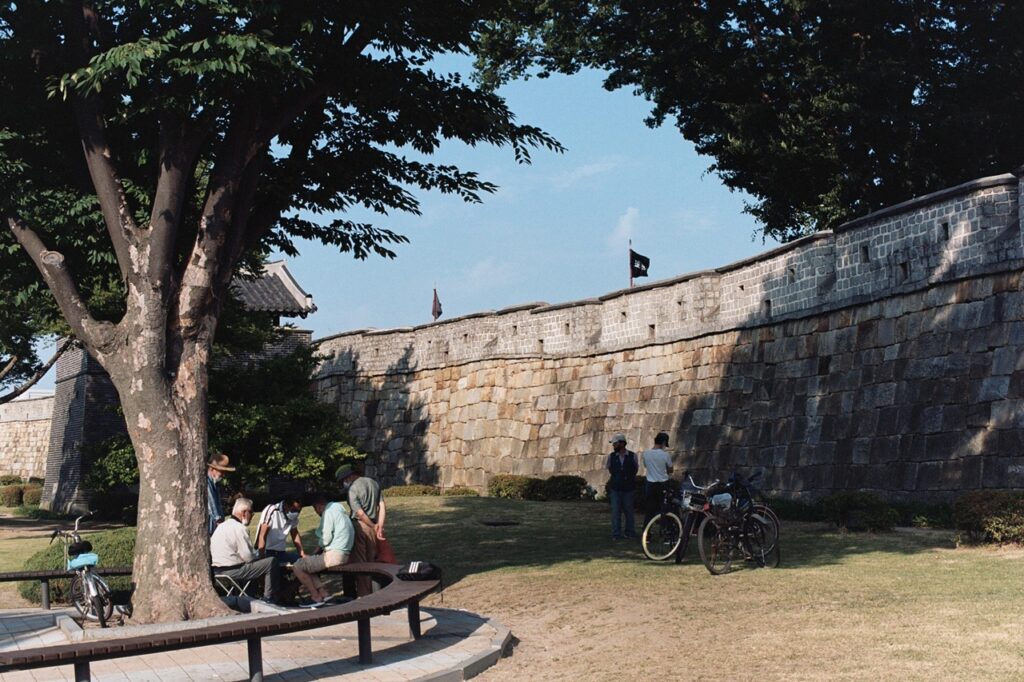
Surrounded by walls of stone that reach great heights, the only walled city in South Korea offers visitors a glimpse into its glorious past while also providing modern amenities. Suwon is a tale of culture, art, and history. Explore “the city of filial piety” where one can transcend through time to experience the extravagances of past and future intertwined together to present itself as a heavenly wonderland.
Known for its well-preserved historical monuments which dwells the pride of its ancient realm, the once triumphant ancient city is now home to some of the biggest tech giants. The museums, the forts, and the glittering night markets all to satisfy the shopaholics are some of the key attractions in the capital of Gyeonggi province.
Here are some of the best things to do along your journey through the streets of Suwon paved with ancient relics & their stories.
Suwon Hwaseong Fortress
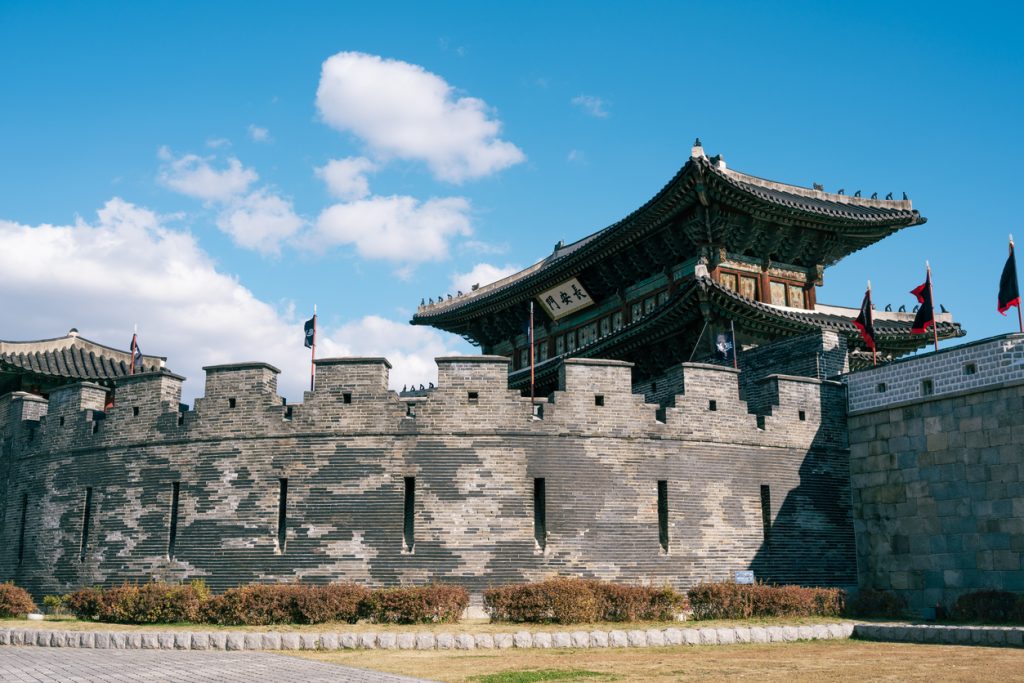
In the heart of the city surrounding the majestic paldalsan mountain stands a great wall extending over a length of 6km– The Hwaseong Fortress. The great Joseon King Jeongjo built this iconic monument in Suwon as a tribute to his father at the end of the 18th century.
Built with the skills and wealth of the great Joseon dynasty, the Hwaseong Fortress is a testament to the splendors of the old days. Explore the various magnificent gates and watchtowers before taking a walking tour along the illustrious wall to get amused by the grandeur of Korean military architecture.
Paldalmun Gate
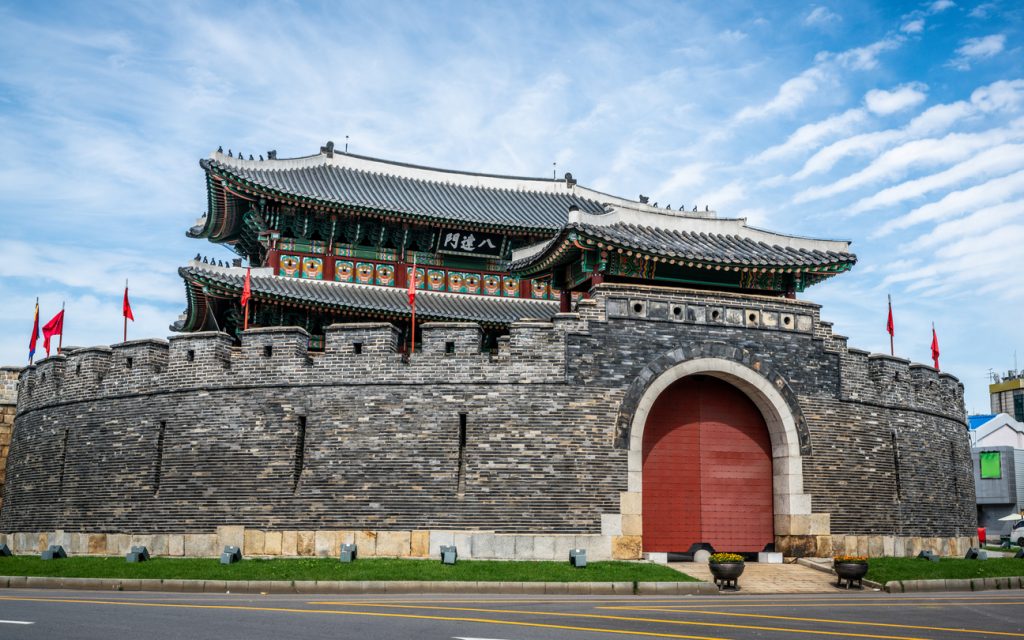
Hwaseong Fortress, the iconic Suwon destination deserves the grandest welcome. And that is what Paldalmun gate provides for the visitors. Also known by the name Nammun Gate, it is situated at the South of Hwaseong Fortress. This majestic-looking gate stands alone in a busy roundabout in the center of Suwon.
The right wall of the gate consists of an intricate plaque that carries the names of the construction workers who built this monument. And another crescent-shaped wall called Ongseong circles one side of the Paldalmun. The greatest amusement here is the unique view offered from atop the gate. You can see all of Suwon, and on a clear day, even Seoul will be visible.
Hwaseong Haenggung Palace
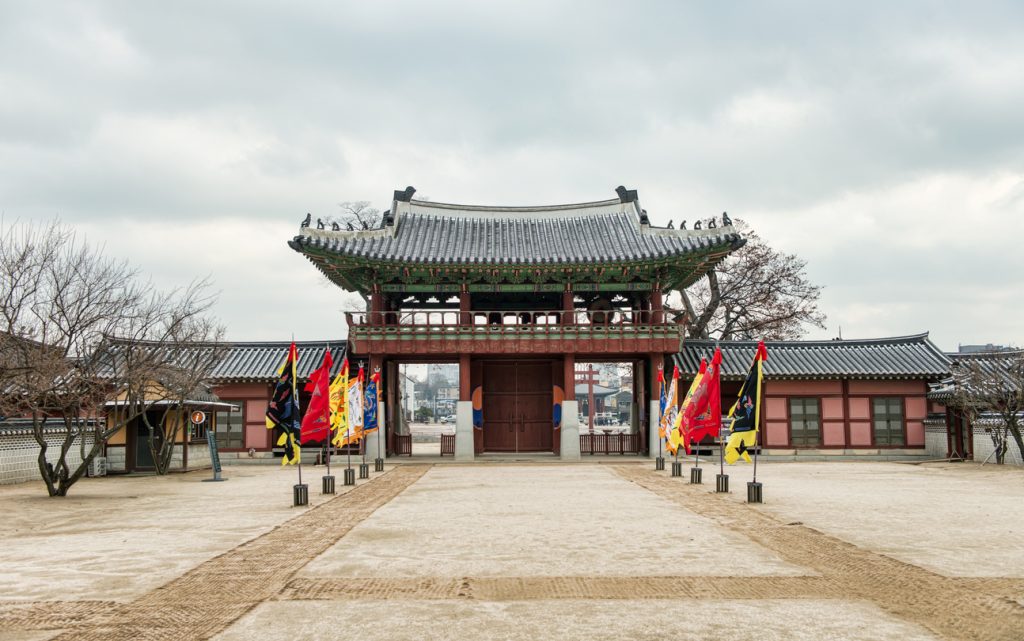
As with many other attractions in Suwon, Hwaseong Haenggung Palace is a royal grandeur at its finest. The palace was used as a temporary residence for King Jeongjo and his court during the period of the war of the occasional visits to the Fortress. Hwaseong Haenggung Palace should be on the priority list of the best places to visit at Suwon Hwaseong Fortress.
Korean Folk Village
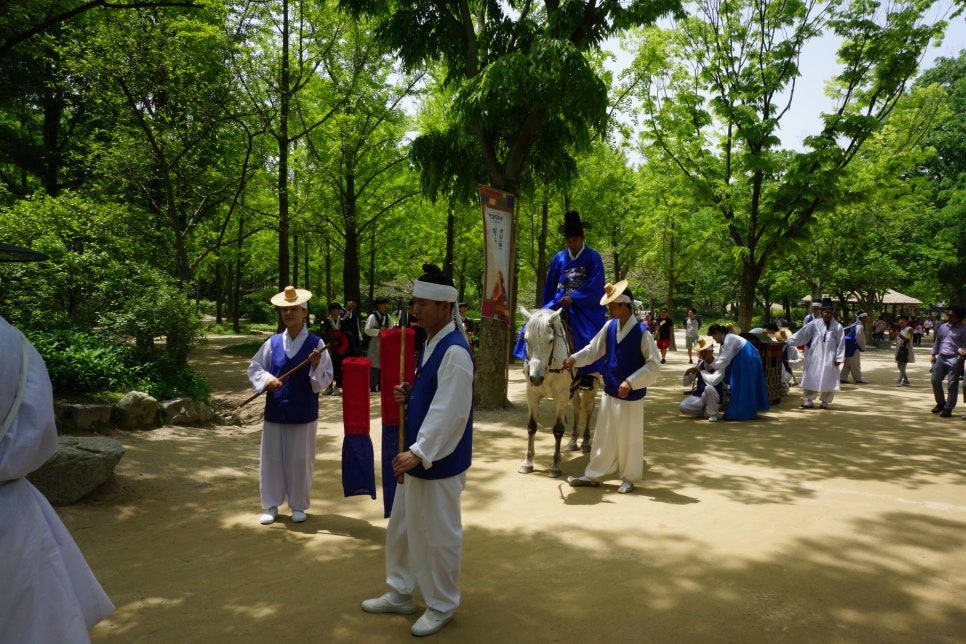
It is obvious that strolling through the Hwaseong fortress relinquishes an age-old curiosity in one’s mind about the minute and intricate details of day-to-day life in the Joseon era. Located in the east of the city, Korean Folk Village is a heritage site that paints the life of the past in many vibrant colors so that the curious ones of the present day can fill their buckets of imagination.
The village flaunts the many lives of traditional Korean culture and performances such as horseback martial arts, farmers’ music, and Korean wedding ceremonies. And once you are finished wandering in and out of the historic buildings, enjoy the traditional street market where delicate old dishes such as bukeo-gui, jeungpyeon, and pajeon are served with ecstasy.
Samsung Innovation Museum
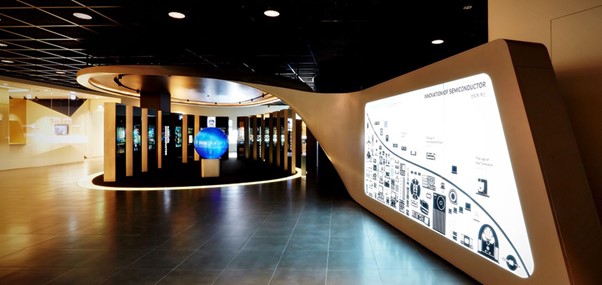
All that comes to mind when one hears about Suwon might be its corridors of power and its royal legacy. But the city is more than just its ancient relics. Samsung Innovation Museum founded in 2014 is a gateway to explore the technological grandiosity that South Korea possesses in the modern world.
Samsung Electronics was founded in Suwon in 1969. And it is from this city where the branches of this gigantic conglomerate grew to reap fruits in different parts of the world. In this Innovation Museum Samsung invites visitors to learn and experience the development of the electronic industry in South Korea.
Toilet Museum (Haeujae)
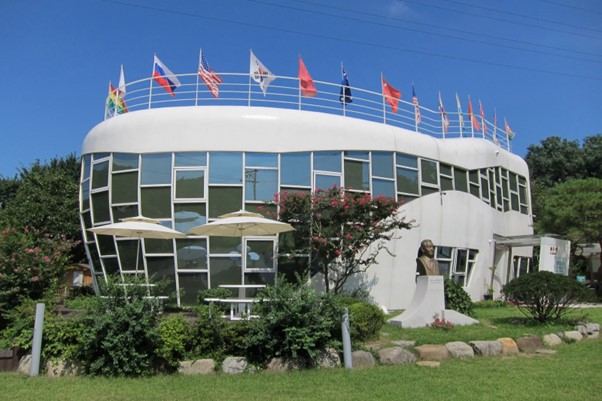
Out of all the things that one expects in Suwon, this might be the least expected. Suwon can amuse visitors with its charm, legacy, and more importantly with its hidden surprises. The Toilet Museum, also known as Haeujae locally, was created by Sim Jae-duck, the former mayor of Suwon in order to spread awareness on improving the toilet sanitation of Suwon.
In 2007 he even pulled down the house that he had lived in for 30 years and rebuilt it like a giant toilet to celebrate the foundation of the World Toilet Association. Haeujae in the Korean language means a “house to relieve one’s concerns’, a term used in temples to refer to restrooms.
How to reach Suwon?
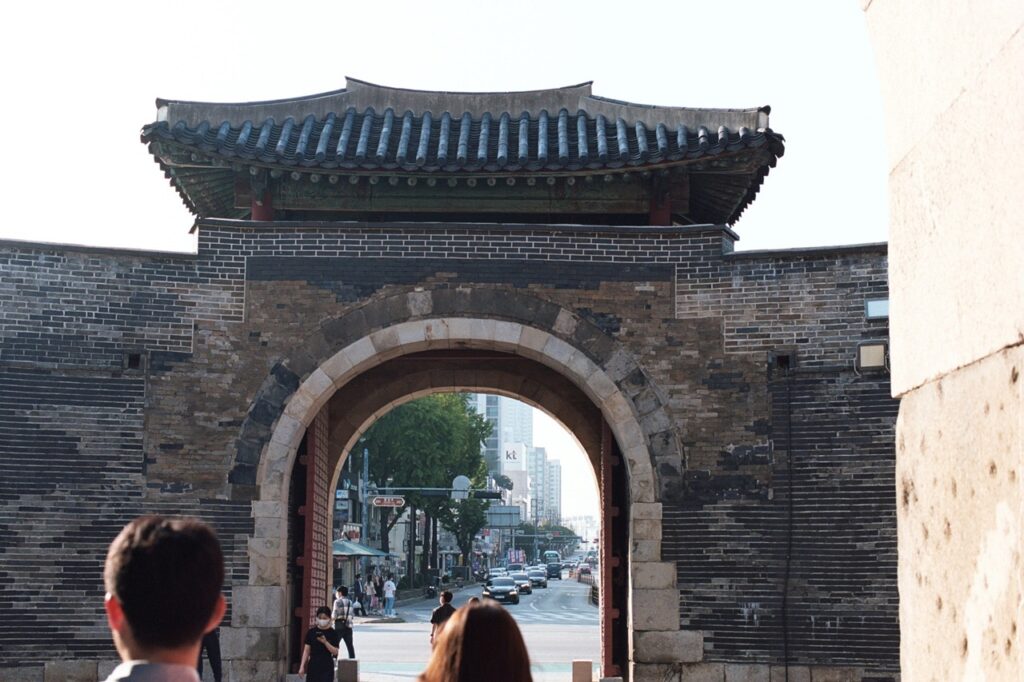
Suwon is one of the more easily accessible cities in South Korea. It is just 45 mins away from the capital Seoul. And further, the bus is cheap and the car is comfortable to rent! This allows tourists the much-needed freedom to explore the beauty of Suwon.
Best time to visit Suwon
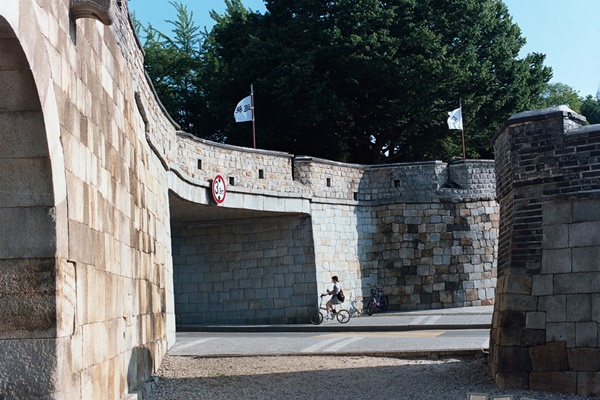
The city of Suwon wears the splendors of nature throughout all the seasons. One can easily visit the city at any time of year to experience its magical charm. Ideally, the months of March, April, or May can be the best suited to enjoy the pleasant weather of Suwon. During this time of the year, Suwon won’t be too warm or too cold but can be blessed with random downpours.
